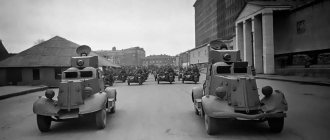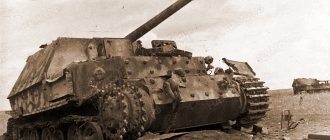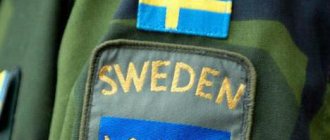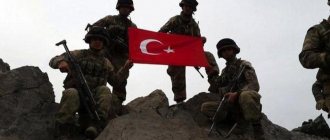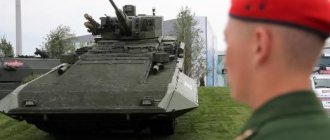Benelux armed forces
The international organization Benelux unites three states (Belgium, the Netherlands and Luxembourg) and has a significant influence on economic and trade issues in Europe. The member states of the organization take an active part in the economic life of Europe. However, Belgium, the Netherlands and Luxembourg can only claim leadership in the economic sphere. The military potential of the Benelux countries can only be considered high when compared with small European states. The current state of the armed forces of Belgium, the Netherlands and Luxembourg in some cases leaves much to be desired, although the leadership of the countries believes that their existing composition and structure are sufficient to fulfill the assigned tasks. Let's look at the armed forces of these three countries.
Belgium
At the beginning of the 2000s, a reform of the armed forces took place in Belgium, during which some elements of their structure were changed. In addition, the types of troops received new names. The Belgian armed forces now consist of a Land Component, an Air Component, a Naval Component and a Medical Component. At the end of the last decade, more than 24 thousand soldiers and officers, as well as several thousand civilian personnel, served in the Belgian armed forces. An interesting feature of the reform was the change in tasks. Modern Belgian armed forces must be ready not only to repel an enemy attack, but also, if necessary, to take part in humanitarian operations. It is also worth noting the gradual abandonment of various tracked vehicles, followed by their replacement with wheeled ones.
At the beginning of this decade, about 12 thousand people served in the Land Component of the Belgian Armed Forces. In addition, about 2 thousand civilians worked in some positions. The Ground Component consists of three main units: the Medium Brigade, the Light Brigade and the 2nd Artillery Regiment. All regiments and battalions for various purposes are brought together into these units. Thus, the Middle Brigade includes five motorized rifle regiments. The composition of the Light Brigade is different, it includes the 12 Ligne Prince Léopold-13 Ligne Light Infantry Regiment, the 2nd Commando Battalion, the 3rd Parachute Battalion, as well as a special operations group. It should be noted that in addition to two brigades and an artillery regiment, the Ground Component includes a number of other units responsible for reconnaissance, supply, equipment maintenance, personnel training, etc. All of them report directly to the Ground Component Command.
Leopard 1A5
At the beginning of the 2000s, Belgium set a course towards abandoning tracked armored vehicles. The most noticeable consequence of this was the decommissioning and decommissioning of Leopard 1A5 tanks. Decommissioned tanks are sold to third countries. For example, more than 40 armored vehicles are planned to be transferred to Lebanon, but Germany is blocking such a deal for political reasons. After the abandonment of tanks, the main type of armored vehicles in the Belgian Land Component became MOWAG Piranha armored personnel carriers purchased from Switzerland. The total number of machines of this type in several modifications reaches 250 units.
ATF Dingo 2 MPPV
Pandur I
The second most numerous armored vehicle in the Belgian army is the German-made ATF Dingo 2 MPPV. The ground component currently has more than 200 vehicles of this model in patrol, command and ambulance versions. There are still about fifty Pandur I armored personnel carriers made in Austria in service. Some of these vehicles are equipped with medical equipment, and some have been converted into reconnaissance versions. The armored vehicles of the Land Component of the Belgian Armed Forces may also include Italian-made Iveco LMV vehicles, but they do not carry armor as standard. The ability to install additional reservation modules is provided only for some of the ordered vehicles. The total number of Iveco LMVs in all variants is about 620 units. Italian cars were purchased as a replacement for the outdated Volkswagen Iltis. A number of the latter are still in use.
Iveco LMV
The 2nd Artillery Regiment, also known as the Batterij Veldartillerie ParaCommando ("Parachute Field Artillery Battery"), has phased out the American-made M109A2 self-propelled gun since 2010. During the reform of the armed forces, artillery units are switching to mortars of various calibers. To support infantry operations, it is planned to use 60-mm M19 mortars (about 60 units) and 81-mm M1 (more than 40) purchased from the United States.
Self-propelled gun M109A2
To carry out air defense, the Ground Component of the Belgian Armed Forces has several dozen Mistral anti-aircraft systems.
Following recent reforms, the number of military personnel in the Belgian Armed Forces' Air Component was increased to 8,600. All aircraft available to Belgium are consolidated into several air wings in accordance with their purpose. Thus, pilot training is carried out by units of the 1st air wing, and transport aircraft serve in the 15th air wing.
Due to the specific views of the Belgian leadership on the role of the armed forces, the Air Component has an original quantitative and qualitative composition. To date, this branch of the military has only 60 American-made F-16 Fighting Falcon fighter-bombers. Initially, their number was 160 units, but subsequently a hundred aircraft were taken out of service and transferred to third countries. Agusta A109 helicopters can be used to perform reconnaissance and attack missions. Of the 46 vehicles of this model received, only 22 are currently in operation.
F-16 Fighting Falcon
Agusta A109
The air component has 19 transport and passenger aircraft of 6 types. The most popular of them is the American C-130 Hercules. The Belgian Air Force ordered and received 12 of these aircraft, one of which was lost in 1996. Transport tasks are also assigned to the Westland Sea King (4 units), Aérospatiale SA 316 (3 units) and NHI NH90 (8 units) helicopters.
Belgium has access to the sea and therefore needs a naval force. The main task of the Naval Component of the Belgian Armed Forces is to protect the country's maritime borders, which determines their composition. A total of about 1,600 personnel serve at four naval bases, to which all available ships and support vessels are assigned.
In 2005, Belgium acquired two Karel Doorman-class frigates from the Netherlands. The Dutch Navy operated these ships since 1991, after which they were transferred to a friendly state. As part of the Naval Component, the ships HNLMC Karel Doorman and HNLMC Willen van der Zaan were named F930 Leopold I and F931 Louise-Marie, respectively.
F930 Leopold I
In 2013, Belgium ordered two new patrol boats from France, which are planned to be accepted into the Maritime Component in 2014 and 2015. The boats have already received names: P901 Castor and P902 Pollux.
In the late seventies, Belgium took part in the Tripartite minesweeper development program, in which it collaborated with France and the Netherlands. The Belgian Maritime Component currently has six ships of this type. Their task is to detect and neutralize sea mines.
The implementation of various auxiliary tasks is assigned to 13 auxiliary vessels of several types. These are transport ships, tugs and crew boats. In addition, the Marine component includes the sailing ship A958 Zenobe Gramme and the royal yacht A984 Alpha IV.
Special mention should be made of the Medical Component of the Armed Forces. This structure includes a command, 4 medical centers, a hospital and several sets of special equipment to help victims during hostilities or natural disasters. The medical component has Agusta A109 Medevac helicopters, as well as several types of ground equipment. Depending on the need, Belgian military doctors can use vehicles with special equipment or medical vehicles based on M113 and Pandur 1 armored personnel carriers.
Netherlands
The armed forces of the Netherlands can be considered the most powerful among the armies of the Benelux countries. Despite financial difficulties, this state is trying to maintain a fairly powerful army, which is superior in its capabilities to the armed forces of some European states. In 2010, the total number of military and civilian personnel in the Dutch armed forces exceeded 47 thousand people. The number of reservists exceeds 30 thousand people. According to some reports, the army command plans to increase the reserve by 50-75 percent.
More than 21 thousand people serve in the Royal Netherlands Land Forces (Koninklijke Landmacht or KL). The KL command controls the special operations forces (Korps Commandotroepen), the 11th airmobile brigade, the 13th and 43rd mechanized brigades, as well as the support command. The 11th Airmobile Brigade consists of four infantry battalions, engineer and medical companies, an auxiliary company and a supply company. The 13th and 43rd mechanized brigades each combine three infantry battalions, a reconnaissance squadron, engineering, medical and auxiliary companies. The differences between these units lie in the different composition of the equipment used. The Royal Land Forces Support Command controls the intelligence, fire support and air defense commands, as well as the 101st Engineer Battalion, two logistics battalions, the 400th Medical Battalion and a number of other units.
Several years ago, the Dutch ground forces abandoned tanks. Decommissioned German-made Leopard family vehicles are gradually being sold to third countries. In this regard, the German Boxer wheeled armored personnel carrier becomes the main armored vehicle of the troops. About 200 vehicles of this model have already been delivered to the army, and in the near future their number should double. An important element of the fleet is the Swedish CV9035NL infantry fighting vehicle. Now the troops have more than 150 vehicles of this type in various modifications. In the future, their number may reach 200 units. More than 370 Fennek vehicles, developed in the Netherlands, are intended to perform reconnaissance and transport missions. Some of this equipment is equipped with anti-tank missile systems.
CV9035NL
In the second half of the 2000s, Australia supplied the Netherlands with more than 70 MRAP Bushmaster Protected Mobility Vehicles. Some of this equipment was lost in Afghanistan. More than 200 ALSV vehicles have been ordered to transport personnel and perform other tasks. The smallest type of armored vehicle in KL is the German-made Fuchs 1 armored personnel carrier. 18 of these vehicles are equipped with electronic reconnaissance and electronic warfare equipment, 6 are supplied as reconnaissance vehicles.
MRAP Bushmaster Protected Mobility Vehicle
ALSV
Fuchs 1
The air defense of the KL army units is based on self-propelled anti-aircraft systems built on the basis of Fennek armored vehicles and carrying FIM-92 Stinger missiles. The number of such systems reaches two dozen. In addition, Stinger missiles are used as part of MANPADS. German-made Gepard self-propelled guns were taken out of service several years ago.
The backbone of the artillery of the Royal Netherlands Army is the PzH 2000 self-propelled artillery mounts supplied by Germany. KL artillery units have less than 60 such combat vehicles. In addition, ground forces brigades have several types of mortars.
The auxiliary units operate more than 45 Büffel and Bergepanzer 2 repair and recovery vehicles. The engineering units operate 14 Biber tank bridge laying vehicles and 14 Pionierpanzer engineering vehicles.
The Royal Air Force (Koninklijke Luchtmacht or KLu) is dedicated to protecting the country's airspace, supporting land and sea units, and performing a variety of transport missions. KLu employs about 11 thousand people. The structure of the Dutch Air Force is of some interest. Several air bases, divided according to tactical tasks, are subordinate to the command of the military branch. Each base has several squadrons assigned to it.
Most of the Dutch Air Force's combat aircraft serve at Leeuwarden and Volkel airfields. The first of them is home to the 322nd and 323rd squadrons, armed with F-16 fighters, the 303rd search and rescue squadron, as well as several auxiliary squadrons. In 2016, Leeuwarden Air Base is due to receive a new squadron equipped with American-made MQ-9 Reaper unmanned aerial vehicles. Volkel Base is home to the 312th and 313th Fighter Squadrons, the 601st Reserve Squadron and several support units.
KLu helicopters are organized into squadrons subordinate to helicopter command. Helicopters of various types are used in 17 squadrons based at the airfields Gilze-Rijen, Leeuwarden, Vlieland, Deelen and Den Helder.
Eindhoven Airport is home to two transport, one reserve and two support squadrons. Four training squadrons, a meteorological group, an Air Force logistics center and several support units serve at Woensdrecht.
The only type of combat aircraft in the Koninklijke Luchtmacht is the F-16 Fighting Falcon. In the eighties and nineties, the Netherlands received from the United States and built under license more than 200 aircraft of this type. After a series of reductions, only 61 fighters remained in service. In the future, the Netherlands should receive 35 F-35A Lightning II fighters, two of which have already been transferred for testing and study. Since 2004, after the accident, the Dutch Air Force has operated 29 AH-64D Apache attack helicopters.
There are only 9 aircraft of several modifications in the transport aircraft fleet. If necessary, the Netherlands can use three American C-17 Globemaster III aircraft based in Hungary as part of the Heavy Airlift Wing program. The most popular private transport aircraft is the C-130 Hercules. Dornier 228 aircraft, which are used to patrol the coastal zone, can also be used to perform transport tasks.
C-130 Hercules
The Dutch Air Force uses more than 60 helicopters of several models as transport and auxiliary aircraft. The most popular of them are Eurocopter AS532U2 Cougar and Boeing CH-47D (17 units each).
KLu's training units operate 13 Swiss-made Pilatus PC-7 Turbo Trainer aircraft.
The Royal Netherlands Navy (Koninklijke Marine - KM) is one of the oldest navies in Europe. Currently, more than 10 thousand people serve in them. KM has several dozen warships, submarines and auxiliary vessels. In addition to naval units, the naval forces include marines and two helicopter squadrons. The Coast Guard is not officially a structural unit of the Navy, but in some cases it can be controlled by their command.
The combat strength of the Dutch Navy has been steadily declining over the past decades. Thus, in the period from 1974 to 2014, the number of ships and submarines decreased from 59 to 21. A similar trend was observed in the case of naval aviation; over forty years, the number of aircraft and helicopters decreased from 57 to 20. It should be noted that in the late nineties KM abandoned anti-submarine aircraft, after which only helicopters of various types are used in naval aviation.
Surface combatants of the Dutch Navy of several classes are combined into the so-called. Naval squadron. This unit consists of four De Zeven Provinciën class frigates and two Karel Doorman class frigates. The latter will cease their service in the foreseeable future. Perhaps they will be sold to a third country, as has already been the case with other ships of this type. In 2012 and 2013, the Naval Squadron was replenished with four Holland-class patrol ships. In addition, the Navy has two Rotterdam-class landing dock ships (despite belonging to the same project, the second ship Johan de Witt has a lot of differences from the parent Rotterdam) and one support vessel HNLMS Amsterdam (A836).
In the early nineties, the KLu Submarine Service received the lead diesel-electric submarine of the Walrus class, built in the Netherlands. Subsequently, three more submarines of this project were built. The fourth submarine, Bruinvis, was commissioned into the Navy in 1994.
Walrus
The Mine Countermeasures Service of the Netherlands Navy includes several minesweepers and diving vessels. The Netherlands, together with France and Belgium, previously participated in the development of the Tripartite minesweeper project. Koninklijke Marine subsequently ordered six ships of this type. There are four Cerberus class diving vessels.
In addition, the Dutch Navy includes two hydrographic vessels, two training vessels (including the sailing Urania), several tugboats and 17 landing boats of several types. The latter are operated by the Marine Corps.
Currently, the Dutch naval aviation is receiving previously ordered multi-role NH-90 helicopters, which are planned to be used for patrol and search and rescue purposes.
Until recently, the most popular type of armored vehicle in the Dutch Marine Corps was the Finnish-made XA-188 armored personnel carrier (also known as Patria Pasi). 200 vehicles of this type are gradually being withdrawn from service and sent for storage. Some of the decommissioned armored personnel carriers have already been sold to third countries. After the decommissioning of the XA-188 armored personnel carrier, the BV206S tracked articulated armored personnel carrier, developed in Sweden, becomes the most popular armored vehicle of the Marine Corps. Of the one and a half hundred vehicles of this type, more than 120 must undergo modernization within several years, the rest will be sold or scrapped. In the foreseeable future, the future fate of several dozen BVS10 tracked armored personnel carriers should be determined.
The Dutch Marine Corps also operates several classes and types of unarmored vehicles. Marine artillery is represented by several types of mortars with calibers from 60 to 120 mm.
Koninklijke Marechaussee – KMar
The final component of the Dutch armed forces is the Royal Military Police (Koninklijke Marechaussee - KMar). The task of this structure is to protect important objects, incl. state borders, investigating offenses in the armed forces, and supporting the police in some situations. Almost 7 thousand people serve in the Royal Military Police. Employees have a variety of small arms, as well as automobiles and motorcycles. To perform special tasks, military police can use YPR-765KMar armored personnel carriers.
Luxembourg
Luxembourg is one of the smallest states in Europe and therefore cannot have a large and powerful army. However, the Grand Duchy of Luxembourg is trying to form its armed forces based on its capabilities and needs. The total strength of the Luxembourg army does not exceed several hundred people: in 2010, 450 contract soldiers (including about 50 military musicians), about 350 conscripts and about 100 civilian personnel served in it.
The armed forces of Luxembourg consist only of ground forces. They consist of only one infantry battalion, divided into five companies. Companies A and D represent the main fighting force of the entire country. These companies include a headquarters and three reconnaissance platoons. Each platoon has its own command and unites four sections. Squads A and D are each equipped with two HMMWVs with heavy machine guns and BGM-71 TOW anti-tank missile launchers. Luxembourg is a member of NATO and regularly participates in various military operations. In this case, two Luxembourg motorized rifle companies come under the jurisdiction of the Belgian command.
Company B is a training ground for soldiers and officers. On the basis of this company, military personnel undergo various courses, including the training necessary to obtain a civilian profession after leaving the army. Several years ago, two-level courses L' Ecole De l' Armee (Army School) were organized. Level B training allows soldiers with less than 18 months of service to take courses in several disciplines, both general and military. After two six-month semesters, a military member can enter Level A. In addition, this course can be taken by those who have received the necessary education in civilian educational institutions. Level A courses are an in-depth and accelerated version of B courses. The entire Level A program is completed in six months.
Company C is also a training company, but has different missions. This branch of the military is responsible for the initial training of soldiers and their physical conditioning. In addition, in Company C, soldiers learn to operate vehicles. Company C has a separate platoon, Section de Sports d'Elite de l'Armée ("Sports Elite Platoon"), in which athletes entering the army can serve after basic training.
Currently, Luxembourg does not have its own air force. The last training aircraft used by the Luxembourg armed forces was retired in the late sixties. Luxembourg is due to receive the A400M military transport aircraft in 2019-20. However, there are several aircraft assigned to Luxembourg. 2 NATO Boeing CT-49A training transport aircraft and 17 Boeing E-3C Sentry airborne early warning and control aircraft are registered in Luxembourg, but serve at the Geilenkirchen base (Germany) and are operated by NATO pilots.
Based on materials from: https://mil.be/ https://armyrecognition.com/ https://globalsecurity.org/ https://defense-update.com/ https://janes.com/ https://landmacht .nl/ https://defensie.nl/ https://navyrecognition.com/ https://armee.lu/ The Military Balance 2010
Basis in law and purposes[edit]
The Dutch armed forces exist according to a declaration in the Dutch constitution. [6] Article 97 of this constitution determines that the armed forces exist.
- to defend the Kingdom of the Netherlands and its interests in the world; and
- to protect and promote the international rule of law.
This means that the role and responsibility of the Dutch armed forces in international stability and peacekeeping are defined by the constitution.
The same article of the constitution determines that the highest command of the Dutch armed forces is under the authority of the Government of the Netherlands. This has been the case since the constitution was changed in 1983; before this, supreme command of the armed forces of the Netherlands was exercised by the King of the Netherlands.
Central headquarters[edit]
| Chief of Defense | Appointed | Branch | ||
| General Onno Eichelsheim (born 1966) | April 15, 2022 (22 days) | Royal Netherlands Air Force (attack helicopters) | ||
| Deputy Chief of Defense | Appointed | Branch | ||
| Vice Admiral Boudewijn Boots (born 1964) | March 8, 2022 (60 days) | Royal Netherlands Navy (naval squadron) | ||
| Army commander | Appointed | Branch | ||
| Lieutenant General Martin Wijnen (born 1966) | August 28, 2022 (1 year, 252 days) | Royal Netherlands Army (Engineer Corps) | ||
| Fleet Commander | Appointed | Branch | ||
| Vice Admiral Rob Kramer [nl] (born 1962) | September 22, 2022 (3 years, 227 days) | Royal Netherlands Navy (naval squadron) | ||
| Commander of the Air Force | Appointed | Branch | ||
| Lieutenant General Dennis Lute (born 1963) | June 10, 2016 (5 years 331 days) | Royal Netherlands Air Force (Fighters) | ||
| Commander of the Royal Mareshauze | Appointed | Branch | ||
| Lieutenant General Hans Leuthen [nl] (born 1963) | September 2, 2022 (1 year, 247 days) | Royal Marechaussee (Schiphol police service area) | ||
Links[edit]
- Werken bij de landmacht - age required, Dutch army
- ^ab[1], Aantallen staff
- [2], Ministry of Defense, Facts and Data
- «Financiën | Over Defense | Defensie.nl" (in Dutch). Ministry of Defense (Netherlands). 2022. Retrieved August 20, 2022.
- "Prinsjesdag: Nadruk voor Defensie op digitalisering en duurzaamheid". Defense Department. June 25, 2022. Retrieved September 15, 2022.
- "Artikel 97: Krijgsmacht". denederlandsegrondwet.nl
. De Nederlandse Grondwet. Retrieved February 15, 2022. - "Dismissed" in this case means that no conscripts in the Netherlands are conscripted; the legal mechanism of the bill is still in effect.
- ↑
Gain, Nathan (22 January 2022).
"Dutch sailors now cleared for submarine service". Naval News
. Retrieved February 15, 2022. - "Aantallen staff". defensie.nl
. Defense Department . Retrieved February 15, 2022. - "Artikel 126a. - Algemeen militair ambtenarenreglement." wetten.nl
. Overheid.nl. Retrieved February 15, 2022. - Teitler, Ger (August 1976). "A successful example of military unions in the Netherlands". The Armed Forces and Society
.
2
(4). DOI: 10.1177/0095327X7600200404. Retrieved February 15, 2021. - "More Dutch troops for Afghanistan". BBC News
. February 3, 2006. Retrieved June 7, 2012. - "The Netherlands confirms Afghanistan's withdrawal in 2010" (in Chinese). ABCnet.au. December 19, 2007. Retrieved June 7, 2012.
- "Dutch troops to leave Afghanistan in 2010". Brisbane Times
. January 24, 2009. Retrieved June 7, 2012. - Door editor Mark Kranenburg. "Druk op Nederland om te bliss in Afghanistan". Nrc.nl. Archived from the original on December 8, 2009. Retrieved June 7, 2012.
- Onza's Door correspondent Peter de Koning. "Holbrooke 'hoopt dat Nederland in Afghanistan blijft'". Nrc.nl. Archived from the original on March 18, 2010. Retrieved June 7, 2012.
- Door een onzer redacteuren. "Clinton's bluff in Uruzgan". Nrc.nl. Archived from the original on December 6, 2009. Retrieved June 7, 2012.
- Door een onzer redacteuren. "Embracing style in the om inzet coalition in Uruzgan". Nrc.nl. Archived from the original on March 11, 2010. Retrieved June 7, 2012.
- "Northern Afghanistan in Beld". Telegraaf.nl. December 10, 2009. Retrieved June 7, 2012.
- "Geheim kabinetsberaad over nieuwe missie Afghanistan". Elsevier.nl. December 10, 2009. Retrieved June 7, 2012.
- Marquand, Robert (22 February 2010). "Collapse of the Dutch Government: Will More European Troops Leave Afghanistan Now?" . Christian Science Monitor
. Archived March 28, 2010. - UPI (August 1, 2010). "Netherlands begins withdrawal of Afghan troops". Retrieved August 1, 2010.
- This article incorporates public domain material from the CIA World Factbook: 2006 Edition.


